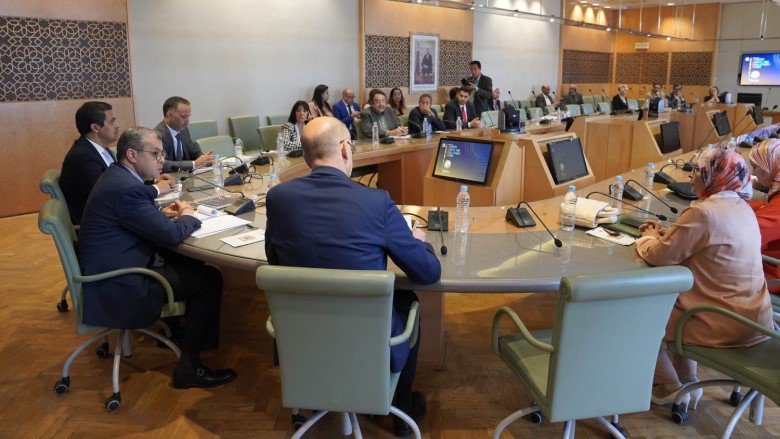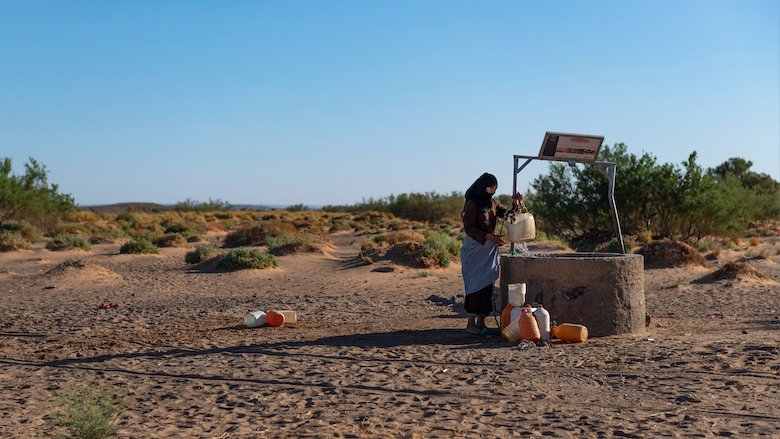As a follow up to the initial parliamentary meeting, we interviewed the Morocco CCDR authors to gain more insights into the climate situation on the ground:
How does climate change affect Morocco?
The effects of climate change are increasingly present in Morocco, where water scarcity, drought, and floods have become growing issues. Climate change seriously disrupts the water cycle, as portrayed by frequent and intense droughts and floods, as well as growing water scarcity.
Water inflows have been declining – between 1960 and 2020, the per capita availability of renewable water resources decreased from 2,560 m3 to about 620 m3 per person annually, placing Morocco in a situation of structural water stress (below 1,000 m3), and quickly approaching the absolute water scarcity threshold of 500 m3 per person per year. Due to its geographic location, high rainfall variability, and topography, Morocco is also particularly prone to floods. Twenty major flood events have been registered in the past two decades, with reported damage of around $450 million a year.
These disruptions present a major potential threat to the country’s economic prospects, equality efforts and social sustainability. Four-fifths of Morocco’s most vulnerable population lives in rural areas, relying on rainfed agriculture as a source of food and income. Moreover, rising sea levels increase the risk of flooding, which can cause economic and individual losses in coastal areas where 65% of the population and 90% of industry are located. Climate change could lead to the migration of up to 1.9 million people from rural to urban areas by 2050.
How has the World Bank been helping Morocco deal with the situation?
The World Bank is supporting Morocco on both the adaptation/resilience and mitigation fronts. To address water scarcity and its impacts on agriculture, the Bank is accompanying Morocco to increase water productivity (“doing more with less”) for small and medium-sized farmers through the modernization of irrigation systems to drip irrigation and the enhancement of water governance. It has also supported strengthened disaster and climate resilience through structural disaster and climate-related risk reduction investments, financial coverage against catastrophic events and support to the new Blue Economy national program to enhance the resilience of coastal areas. On the mitigation front, the World Bank has supported the emblematic Noor solar power program with financing of over $700 million US. New operations dedicated to climate action will support the country’s implementation of the Nationally Determined Contribution under the United Nations Framework Convention on Climate Change and the government’s ambitious water emergency plan put in place to respond to the recent series of drastic droughts.
About 35 percent of the new financing in Morocco over the past three years has been dedicated to climate action, representing a total of about $1.6 billion US. In addition to financing, the Bank has worked closely with Moroccan institutions to analyze impacts of climate change on various sectors from agriculture to blue economy.
What difference will the CCDR make? What are some of the specific actions envisaged?
Many reports have been written on Climate change, but always with a sectoral lens. For the first time, the CCDR explores the relationship between climate change and Morocco’s development goals, both in terms of risks and opportunities. The CCDR builds on an extensive body of quantitative and qualitative studies as well as on novel modeling exercises and assesses policy and investment options that could achieve both climate and development objectives synergistically, putting Morocco on a low-carbon and resilient path.
The CCDR identified three priority areas to tackle: 1. water scarcity and droughts, notably through the lens of the water-agriculture nexus; 2: resilience to floods in order to preserve urban and coastal economies and livelihoods; and 3: decarbonizing the economy on a path to zero-net emissions by the 2050s. In order to address these three priority areas, three crosscutting enabling needs must be met: (1) financing (both private and public); (2) strong institutions and governance; and (3) an equitable transition so no one is left behind.
The CCDR offers five principles to enable Morocco to reach its carbon neutrality. The five principles are the following:
● Adopting a whole-of-government approach
● Protecting the most vulnerable
● Establishing a robust system of climate information and analysis
● Unleashing innovation
● Enabling engagement of relevant stakeholders
Why did you choose to hold a workshop with parliamentarians? What was the feedback from them?
The CCDR highlights the need to combine policy reforms and investments to tackle climate change. It is particularly true in the sectors of energy and water. Engaging with the parliamentarians is critical as they are uniquely positioned to prioritize investments (through the process of validation of the Finance Law) and policy reforms. They also have direct access to citizens and can play a critical role in raising awareness of the need for climate action.
We received very positive feedback from the parliamentarians, who were very engaged during the session and who seemed to have an appetite for more. We are planning to continue engaging with specific committees within the Parliament, particularly with the water policies committee.
What will the impact and achievements of the CCDR be?
The CCDR is instrumental in informing future engagements (both financial and analytical) in Morocco. This year, the World Bank has already initiated the preparation of projects that come as a direct operationalization of the CCDR recommendations: 1. A water operation to support the implementation of the government’s ambitious plan to address water scarcity, and 2. a climate operation, led by the Ministry of Economy and Finance, supporting a “whole of government” approach to climate action by strengthening the coordination of the different actors. That is why engaging with parliamentarians is critical at all stages.


